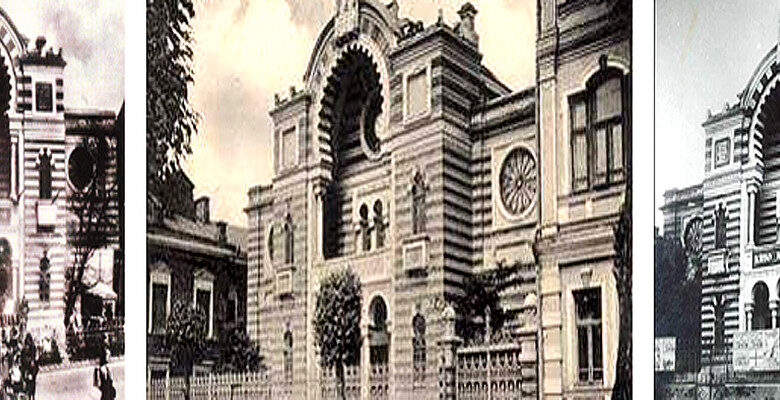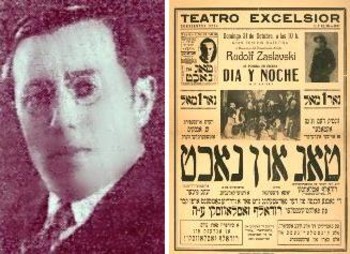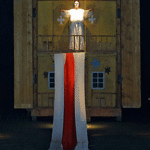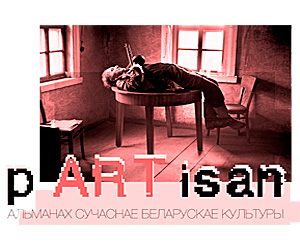EVENTS. NAMES. PLACES.
…Among the members of my family profession of an actor has been considered as shameful. When in our capital a little number of actors occasionally entered into another stratum of society, so then in a province, especially in a Jewish surroundings, they were treated badly and were never accepted.
Solomon Mikhoels
an actor and director of State Jewish theatre in Moscow(SJT), the leader of the soviet Jewish, came from Dinaburg, but now is Daugavpils, which till the beginning of the 20th c. was a county town of the Viciebsk province
BACKGROUND
• The beginnings of the Jewish theatre are connected with the tradition of the theatre performances on a holiday Purim, where from the beginning of the 16th с. actors in costumes of the purims showed the events from the book of Esther. However the Jewish didn’t have their personal theatre till the 70s of the 19th c.
• October 5-6, 1876. It is the date of birth of the professional Jewish theatre. It was the day when in Iasi (town in Romania) was played the first performance of the Jewish troupe, which was headed by a dramatist, director, actor and entrepreneur Abraham Goldfaden. He is considered to be “the father of the Jewish theatre”. But the religious orthodox were for the ban of the theatre performances, because they saw lots of the disturbances of their covenants. The Jewish intellectuals raised in European traditions were also against the theatre in Yiddish as in form of the national isolation.
• In 1883 the Russian authorities officially banned performances in Yiddish. That’s why lots of Jewish actors, dramatists, directors left Russia. The troupes that stayed in “sedentary” towns had to play in German language. They were called “German” troupes. Nevertheless they tried to deceive “inspectors” and performed in the mixture of German and Yiddish.
• In 1917 the prohibition on the religious and national isolation was finally lifted, that was the reason why numerous Jewish theatre communities appeared.
JEWISH THEATRE TROUPES IN BELARUS
• In the end of the 19th beginning of the 20th c. there were about 20 travelling Jewish collectives in Belarus. Some celebrities came on tour: an actress and director Esther-Rachel Kaminskaya (in 1907 she created a theatre “Warsaw theatrical group”), Clara Yung is known for being an operetta singer. In Hrodna in 1910 two theatrical groups appeared: drama and operetta. Under the influence of which the club of Yiddish amateurs “the Jewish art” was emerged (in 1940 Jewish theatre of Miniatures was organized based on drama club. Their performances were frequently criticized by Bolshevists for discrepancy of ideas of new authority that is why the theatre was closed.) Many amateur theatres existed in other different places in Belarus: in Babrujsk, Mahiloŭ, Słonim, Viciebsk, Luboničy, Smarhoń and others.
Interesting! In cities of West Belarus performances were played not only in Yiddish (it’s everyday conversational language of the Jewish in Central and North Europe, that was finally was formed in 16th c.) but in Yiddish too (which united the Jewish of the whole world and played the main role in all spheres of the Jewish life till the 18th c.).
After October Revolution the problem of bilingualism was politisized. Across the prism of the class struggle Yiddish was considered to be a language of a working class and Hebrew was an antiweapon of the bourgeoisie against the Jewish proletariat. [1]
• In September in 1920 at the Belarusian State Drama Theatre (BST-1, nowadays it is National State academic theatre in the name of Yanka Kupala) was created Jewish section under the command of Rudolf Zaslavski. In 1922 the group went on tour to Petrograd, from which it didn’t come back. During the tour in Ukraine the troupe was invited to USA, where it settled down.
• In February of the 1922 by the decision of the Belarusian government “for the service of Jewish masses of Belarus” State Jewish studio of BSSR was created at the Belarusian drama studio in Moscow under control of an actor and director Michael Rafalski. There were teachers in the studio: an actor MAT-1 Michael Tarkhanov and an associate of Konstantin Stanislavsky — a director Vasily Sakhnovsky. A daughter of the famous director-experimentator Vsevolod Meyerhold, Irina was reading Meyerholds’ biomechanics to students. Famous Michael Chekhov visited performances. In a little while the Studio became a part of State Jewish theatre in Moscow (and exactly here Solomon Mikhoels started his actor career, soon became the leading director of the theatre). The students’ graduation performance was staged by famous Russian actor and director Aleksey Dziki.
Note! An artist for the first play of Moscow SJT “The evening of Sholem Aleichem” was Mark Shagal.
For 40 days he created not only unique decorations and sketches for costumes for the performance but wrote a composition “Introduction to the Jewish theatre”. The composition was jostling on the lateral wall along the auditorium and reached until the scene. This panel had a geometric background. Its forms were circles, rectangles, cylinders. They were symbolic: the sun, the moon, planets that in total showed the picture of the whole universe as arena of an eternal play of life” [2]. In the centre of the composition was an image of Abraham Efros, who was a famous art critic, theatre critic and translator, who carried in the hands the Mark Shagal in the theatre hall.
Nowadays there’s no unambiguous reply on the question, what did meant Shagal. There are some opinions that the composition represented encoded message. As far as staging is concerned, it seemed to Shagal that it made a big influence on the development and formation of the Jewish theatre. There were people who agreed with him. For instance, Michael Rafalski wrote that a play which became an example of a bright triumvirate. He was an artist, director and an actor. But the dominating artist was the one who set a style of the theatre. “When the curtain was fluttering and everybody transferred from fantastic panel to what was happening on the scene, you clearly saw the transposition and reanimation of the artistic line. It made an impression that an artist planned the whole range of plastic motions that were transposed through the actor’s body and revived by a director” [3].
Mikhoels who was used in the play, noticed that the decoration influenced on a picture of a role and on acting so strong that nobody could understand what was the matter.
• In 1925 Presidium took a decision “…On giving to State Jewish Theatre the status of a section of Belarusian academic theatre…”, that was meant the SJT had to be transferred to Minsk. The reason was a recent resolution of the Soviet People’s Committee from august 7, 1925 to transfer State Jewish Theatres on self-sufficiency. So, it was logical for SJT to work in republic with a big percent of the Jewish population, for example in Belarus. But the previous chief of the SJT Aleksey Granovski could defend the theatre, which stayed in Moscow (it was closed in 1949 during Jewish repressions).
BELARUSIAN STATE JEWISH THEATRE
• October 21, 1926 in Minsk State Jewish Theatre BSSR was opened with a premiere of the play I.-L. “In a penitential shackles”of I.L. Perac. The basis of the group consisted from graduates of a Jewish studio in Moscow. The head of the troupe was a recognized Michail Rafalski. Theatre didn’t have its own place. Plays were performed on a scene of the first Belarusssian Drama Theatre (now it’s the building of the Kupalaŭski theatre).
In spite of the success of the first plays and on the high appreciation of the top party’s officials ( the head of Chief Political Council of BSSR Shamardina called the appearance of Belarusian State Jewish Theatre the achievement of the national policy). Nevertheless the theatre was criticized in the press. Actors were blamed for a commitment to the left avant-garde as an outcome of the influence on the theatre of the Moscow State Jewish Theatre.
Critics guessed that it wouldn’t be easy to understand for an ordinary working spectator.
• In December of the 1926 was held a special debate dedicated to the theatre’s work. Vasily Sachnovsky who was invited on the discussion defended a theatre’s right on a unique theatre language and style. But arguments towards the theatre continued and the critics were thinking that Belarusian Jewish Theatre as many other theatres should primarily be the means of party and communistic formation. It also should promote socialistic ideas. August 18, 1927 Chief Committee Communistic Party (b) of Belarus took a resolution on “party’s aims towards theatre policy”. It recommended theatres “to root plays that reflect a building’s epoch of the socialism and cultural revolution in conjunction with the national party’s policy, plays of educational character and plays that gave a reasonable rest for a working spectator”.
Thus some creative searching of the theatre was recognized as the wrong one. Every experiment was forbidden and style and language of the theatre unified under the one principle for any theatre – method of the soviet realism.
The theatre had to include a theme of revolution into play’s repertoire about modernity. Thus appeared productions: “Struggle of the machines” of A. Dolgopolsky, “Jim Kuperkop” of S. Godiner, “On the 62 area” I. Dobrodushin, “Guerillas” of F. Aranes etc. [4]
Interesting! In the play “Guerillas” the director Michael Rafalski used shots from topical film about the time of the Civil War. But as critics supposed to think these shots could improve the quality neither of the play nor of the staging.
In 1920s an artist Alexandr Tyshler created for such performances as “”Fuente Ovehuna” Lope de Vega, “Poem about an ax” M. Pogodin etc.
• In 1930 the play “Fuente Ovejuna” of Lope de Vega in the performance of Lev Litvinov (who in 1944 performed the play “Paulinka” and in 1948 was declared as an enemy of the belarussian nation, “cosmopolite without kith or kin” and expelled out of the country) was performed in front of All-Union competition of national theatres in Moscow. The play shared the first place with the Georgian national theatre.
Famous Russian theatre critic Pavel Markov noticed that “this work is one of the achievements of the soviet theatre and is equal according to artistic style to the best plays of Moscow theatres”. [5]
• In 1932 the theatre got its own building — the building of the cinema “Culture” (former Choral Synagogue, today the building of the National Academic Russian Theatre named Maxim Gorky).
• In 1936 Rafalski awarded a status of National Artist of BSSR. In the foyer was installed an honorable monument of Rafalski by Zair Azgur. And in a year in 1937 Michael was arrested by the organs of People’s Commissariat of home affairs and was blamed for creating of counter-revolutionary national grouping. December 20, 1937 he was executed by shooting (was rehabilitated in 1956). Later the chief of the theatre Adam Levite and an actor Benjamin Limon were arrested too.
Interesting! One of the dramatists of the theatre was the Jewish writer Moses Kulbak (was born in Smarhon), an author of plays “Benjamin Magidau” and “Boytre”. The last one was staged in 1937. In the same year in Minsk Kulbak was subjected to repression.
• During the Great Patriotic War the theatre was evacuated for the first in Gorkavskiy region and then united with Belarusian State Theatre-1 in Novosibirsk.
• In 1946 the theatre returned to Minsk. Its building was destroyed. That is why premises of Kupalauski theatre were provided for a work. But they had to be used only 2 days per week. Party leadership began to cross out plays from the repertoire of the national character “because of strangeness to a soviet spectator”. Towards the guidance of the theatre addressed numerous reproaches in nationalism.
• January 13, 1948 in Minsk at the corner of Uljanauskaja and Belarusian street Solomon Mikhoels was murdered. Except his theatre activity he was a header of Antifascist Committee in USSR. Thereby the beginning of anti-Semitic Company in the USSR was started. The struggle with cosmopolitism began. After Rafaski’s shooting directors Lev Litvinov and Viktor Golovchiner were endangered because of the leading of Belarusian Jewish Theatre. They were blamed in worshiping West, formalism etc. Gathering on a topic “cosmopolitans without kith or kin” was in assembly hall of Belorussian Conservatory.
Golovchiner didn’t came there. Litvinov tried to defend himself, he provoked participants on a discussion, but nobody dared to support him. Belarusian theatre expert Vladimir Nyafed (later he became a doctor of art criticism correspondent of SA BSSR) disclosing Litvinov, wrote: “…Litvinov’s activity who’s admired with decadance, misticism, futurism, from slander on the best Russian theatre MChAT reached a warlike formalism, display of Meyerhold’s activity till the mockery under realistic tendency of the theatre’s activity. Untill the time when he can prevent production of the staging of the theatre best modern plays of Russian and Belarusian dramatists”; “… an author’s interpretation of the play “Pavlinka” is equal to counter-revolutionary one interpreted by Belarussian bourgeois nationalist whose name was F.Aliachnovič”. And the first secretary of the Central Committee of the Communist Party (b) of Belarus Gusarov declared that “ the director Litvinov headed a group of theatre critics, which standed on positions of formalism and cosmopolitanism, gave a hostile repetition to the soviet patriotic plays, opposed to their staging in theatres, praised formalistic gamesmanship of an enemy of the soviet realistic Meyerhold’s art. It humiliated achievements of realistic art”. [6]
After these statements Litvinov and Golovchiner forced to leave Belarus. Litvinov never came back here. Golovchiner died in 1961 in Vitebsk, where he came to look at an actress, whom he wanted to invite to the theatre in Vilnius where he worked that time. [7]
• From the report of Gusarov, who was a member of political bureau of The Central Committee of the All-Russian Communist Party (b) to a deputy of the chief of the Council of Ministers of the USSR to G. M. Malyankov from February 8, 1949, where Gusarov ask permission on sanctions against Belarusian Jewish Theatre.
“The Jewish Drama Theatre of BSSR until recently led ideologically wrong repertory policy. In its productions idealized patriarchal life of petit bourgeois segments of population of prerevolutionary jewish population and praised the life in capitalist countries. The leading playwright of the theatre over a long period of time was unmasked at present jewish nationalist I. Fefer. In some series of his productions (for example in the Galkin’s play ‘’The musician”) the theatre depicted America as a promised country where jewish talants can only flourish and find application. Theatre staged “wandering stars” according to Shalom-Aleyhem (in Dobrushin’s staging) where he pervert contents of compositions and propagated pro-american attitudes of mind, set as an object inculcation in consciousness of the jewish population a thought, that the Jewish theatre is not a usual cultural institution, but the centre of a special “Jewish work”. [8]
In a month after this report in republic media was organized a company against Belarusian Jewish Theatre, which was blamed for the staging of nationalistic and cosmopolitan plays and performances.
• March 16, 1948 The theatre get rid of the state subsidy, that actually meant his death. Nonetheless it continued to perform and go on tours.
• March 30, 1949 the resolution of the council of ministers of BSSR the guidance of Arts reformed with its decree the Belarusian Jewish Theatre, “as not having its own base, enough contingent of spectators and not correspond to modern ideological demands of the repertory”.
June 18, 1949 Belarusian State Jewish Theatre stopped its existence.
Prepared by Tania Arcimovič on the basis of materials from the exhibition “The Jewish theatre in Belarus” in The Museum of history and culture of the Jewish in Belarus, Minsk, October 2006.
For the material preparation the author expressed a special gratitude to the library of Minsk Jewish common home, and also director of the museum Vadim Akapyan.
[1] В.Иванов. ГОСЕТ: Политика и искусство 1919-1928. // М., 2007. – Стр. 8. (V.Ivanov. State Judish Theatre: Policy and art 1919-1928. Moscow, 2007. – P. 8.)[2] In the same book. – P. 81-82
[3] Кацис Л.Ф. Декорация Марка Шагала и идеология еврейского театра // Национальный театр в контексте многонациональной культуры: Архивы, библиотеки, информация (Пятые Международные Михоэлсовские чтения) // М., 2008. – Стр. 42. (Kacis L.F. The decoration of Mark Shagal and ideology of the Jewish theatre . National theatre in the context of the multinational culture: Archives, libraries, information (The fifth International Mihoelsovskiy readings). Moscow, 2008. – P. 42.)
[4] Герштейн А.Г. Судьба одного театра. // Мн., 2000. – Стр. 22-24. (Gerstein A.G. Fate of one theatre. Minsk, 2000. – P. 22-24.)
[5] The same book. – P. 31.
[6] Иоффе Э. Г. Белорусские евреи в 1945-1995 // Страницы истории евреев Беларуси. — Мн., 1996. – Стр.178-179. (Ioffe E.G. The jewish of Belarus in 1945-1995 // Pages of the Jewish history in Belarus. – Minsk, 1996. – P. 178-179)
[7] Герштейн А.Г. Судьба одного театра. // Мн., 2000. – Стр. 87-89. (Gerstein A.G. Fate of a one theatre. // Minsk, 2000. – P. 87-89.)
[8] Иоффе Э. Г. Белорусские евреи в 1945-1995 // Страницы истории евреев Беларуси. — Мн., 1996. – Стр. 180. (Ioffe E.G. The jewish of Belarus in 1945-1995 // Pages of the Jewish history in Belarus. – Mn., 1996. – P. 180.)
Opinions of authors do not always reflect the views of editors. If you note any errors, please contact us right away.









